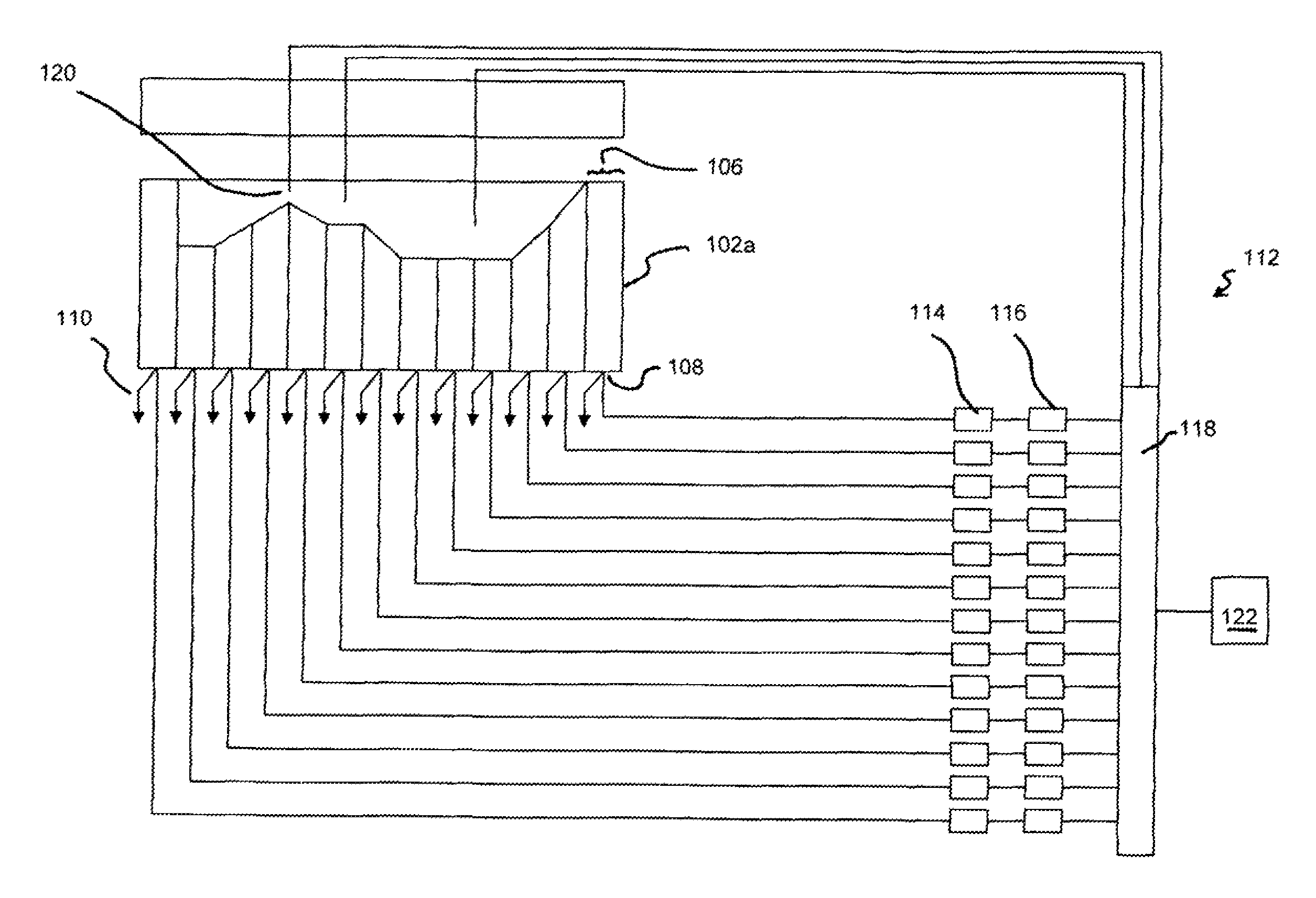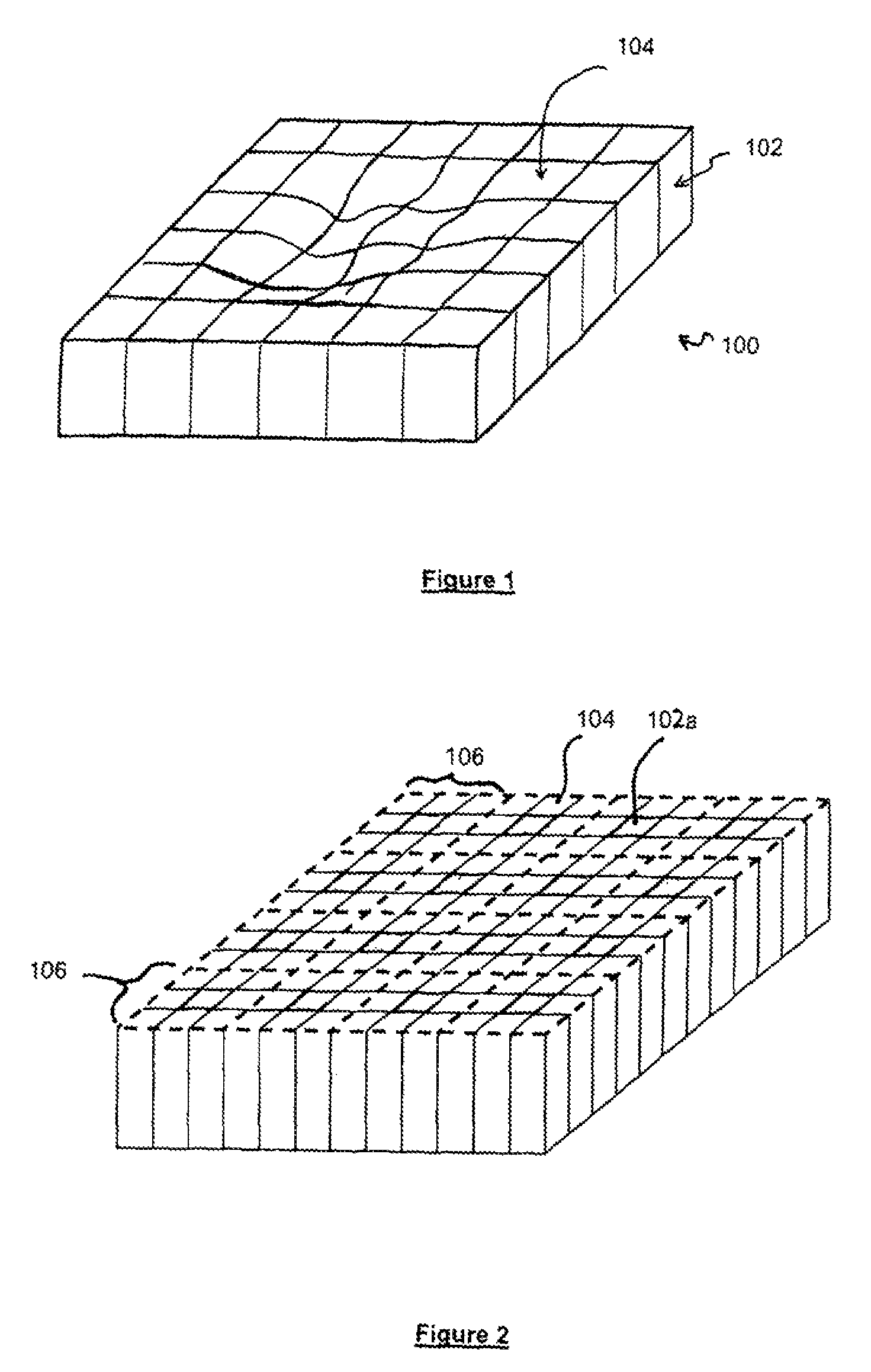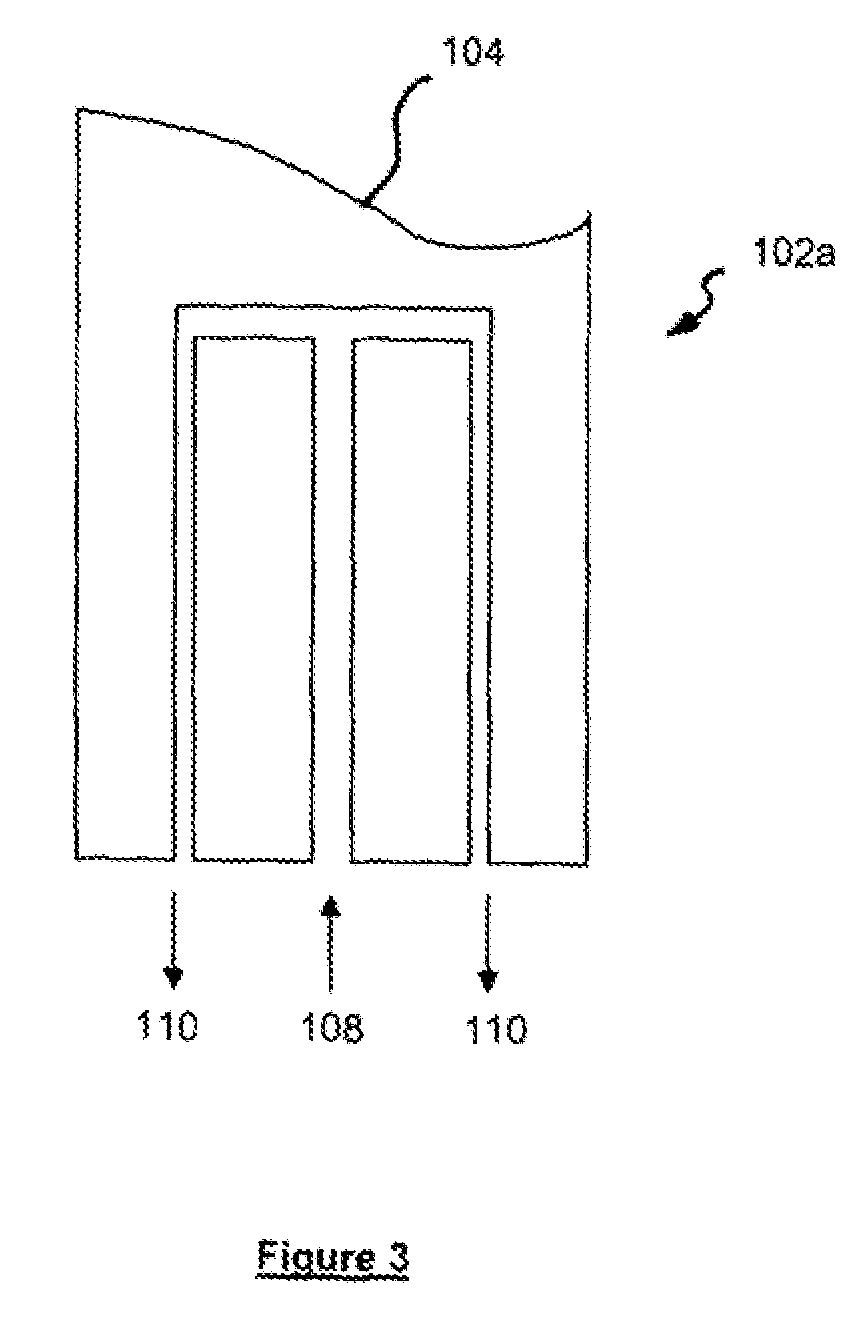Zone control of tool temperature
a tooling system and temperature control technology, applied in the direction of manufacturing tools, ceramic shaping apparatus,auxillary shaping apparatus, etc., can solve the problems of increasing production time and cost, increasing the difficulty of adjusting the temperature of the tooling, so as to reduce the viscosity of the resin and reduce the performance of one heater
- Summary
- Abstract
- Description
- Claims
- Application Information
AI Technical Summary
Benefits of technology
Problems solved by technology
Method used
Image
Examples
Embodiment Construction
[0043]Referring to FIGS. 1 and 2 a tool 100 is shown comprising a plurality of tool pins 102 each having a surface 104 on a tool face which may be flat or which may have a contoured surface. The tool surface is divided into a plurality of tool zones 106, each zone comprising one or more tool pins. In the example shown in FIG. 2 each zone 106 is a 3×3 array of tool pins 102. The tool surface 104 of FIG. 2 is shown as being flat for illustration purposes only and would, in use, have a contoured / shaped tool surface. Each tool zone 106 has at least one heated / cooled pin 102a (see FIG. 3) associated therewith. The heated / cooled pin may be a single pin or where, each tool zone 106 comprises more than one tool pin 102, separate heated and cooled pins can be used. By controlling the application of heat and cooling to the tool zones 106 the transfer of energy into and out of an article being made in the tool 100 can be locally controlled at specific times during, the moulding process. As is ...
PUM
| Property | Measurement | Unit |
|---|---|---|
| temperature | aaaaa | aaaaa |
| dielectric constant | aaaaa | aaaaa |
| ultrasonic absorption/transmission | aaaaa | aaaaa |
Abstract
Description
Claims
Application Information
 Login to view more
Login to view more - R&D Engineer
- R&D Manager
- IP Professional
- Industry Leading Data Capabilities
- Powerful AI technology
- Patent DNA Extraction
Browse by: Latest US Patents, China's latest patents, Technical Efficacy Thesaurus, Application Domain, Technology Topic.
© 2024 PatSnap. All rights reserved.Legal|Privacy policy|Modern Slavery Act Transparency Statement|Sitemap



